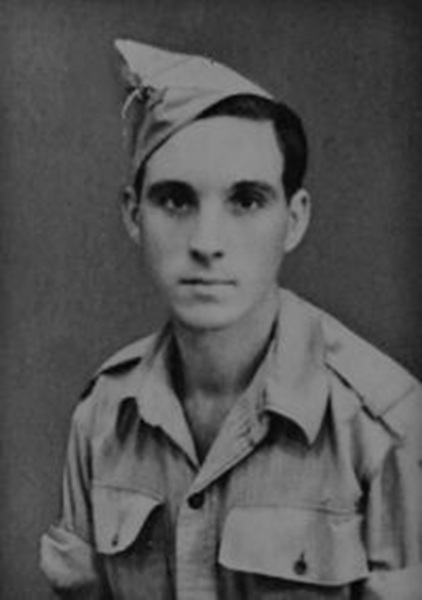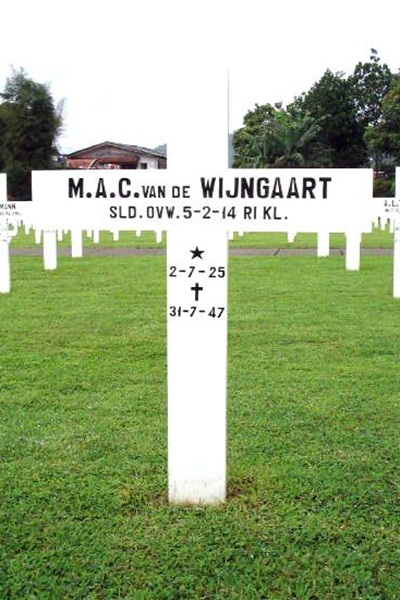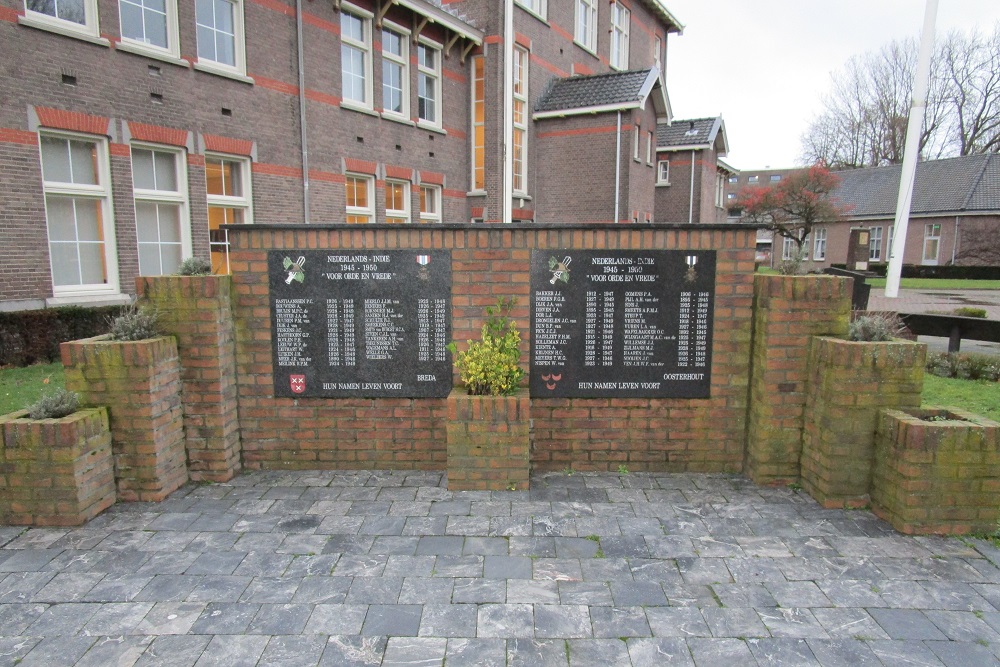Wijngaart, van de, Marinus Aloysius Cornelis
- Date of birth:
- July 2nd, 1925 (Eysden, Belgium)
- Date of death:
- July 31st, 1947 (Padang/Sumatra, Dutch Indies)
- Buried on:
- Dutch War Cemetery Leuwigajah
Plot: V. Grave: 1047. - Nationality:
- Dutch
Biography
Sld.OVW.5-2-14 RI
Marinus was born on 2 July 1925 in Eysden, Belgium, and lived in Breda. In the final months of the Second World War in the Netherlands, he enlisted as a war volunteer for military service. He was assigned to the 2-14 Infantry Regiment, also known as the “Zeeland” battalion, which was formed in February 1945 from the Internal Armed Forces and served as a guard battalion in the final months of the war. After training in Fournes, France, the battalion was deployed in Belgium and Germany, where it advanced as far as Hamburg. Back in the Netherlands, Marinus' battalion was stationed in Haarlem.
To complete his service, Marinus was prepared for deployment to the Dutch East Indies to restore peace and Dutch authority there.
In September, he travelled to Wokingham in England, where Dutch soldiers received British ammunition and army equipment (the Dutch army was still heavily dependent on British army dumps so soon after the war). In mid-October, he travelled to the East on the Alcantara.
However, Admiral Lord Mountbatten, commander-in-chief of the Allied South East Asia Command (SEAC), issued a landing ban for Dutch troops on Java and Sumatra with effect from 2 November. With this ban, Mountbatten wanted to prevent the situation from escalating into a large-scale war in which the British troops still present in the Dutch East Indies would become embroiled. The Alcantara therefore diverted to British Malacca, where Marinus was stationed in Bayan Lepas. There, the end of the landing ban was awaited with additional training. Marinus was finally able to disembark at Batavia in early March 1946.
Until mid-November, Marinus and his battalion were stationed in and around Batavia, where operations were carried out in the outskirts during the first few months, followed by guard duty in the city. In mid-November, Marinus was transferred to Padang on Sumatra, where his battalion was deployed to secure the Padang-Emmahaven road – a short but very dangerous route – and the port area. From the beginning of January 1947, a crackdown began on infiltrators on the Dutch side of the demarcation line with the republicans.
After long, fruitless attempts between the Netherlands and the Republic to implement the Linggadjati Agreement, The Hague and Batavia gave army commander S.H. Spoor permission to start the First Police Action on 21 July 1947. The aim is to regain Dutch control of economically vital areas on Java and Sumatra in order to force the Republic to the negotiating table. For the Dutch soldiers, after months of waiting and restrained action along the demarcation lines, events suddenly come to a head. Marinus is ordered to advance to Indaroeng and occupy Soengei Beramas in order to secure the water supply to Emmahaven. The advance then continued to Goenoeng Sarik, followed by patrols and reconnaissance missions to the south. From 25 July, the infantry also occupied the Boengoes Valley.
Marinus was one of the fatal victims of the Action. On 31 July 1947, he was hit by an enemy bullet in an ambush in Padang. The wound was not fatal, but as soon as he moved, a second bullet struck him and he was killed instantly. Marinus was 22 years old and found his final resting place at the Dutch military cemetery Leuwigajah in Cimahi.
Do you have more information about this person? Inform us!




